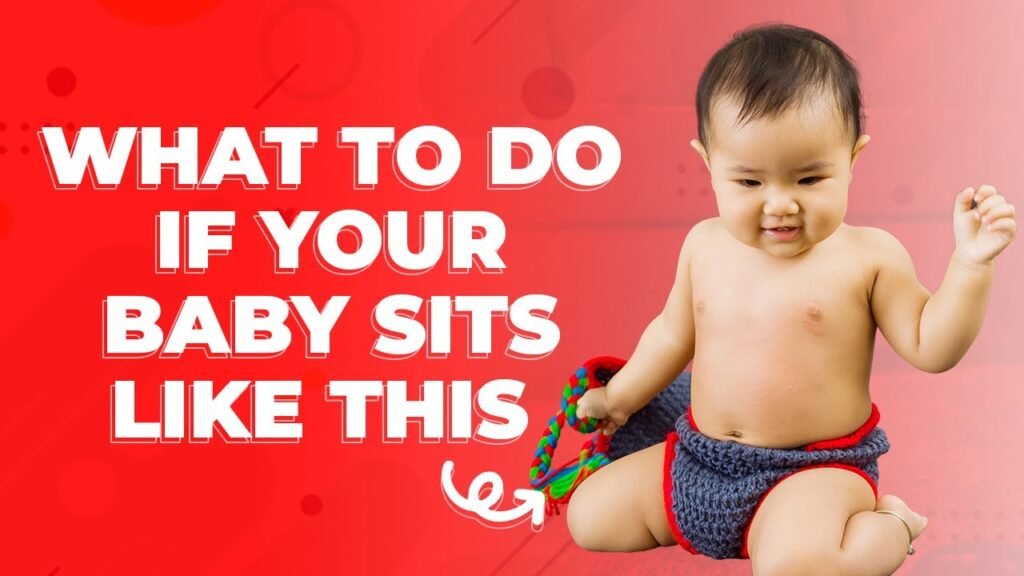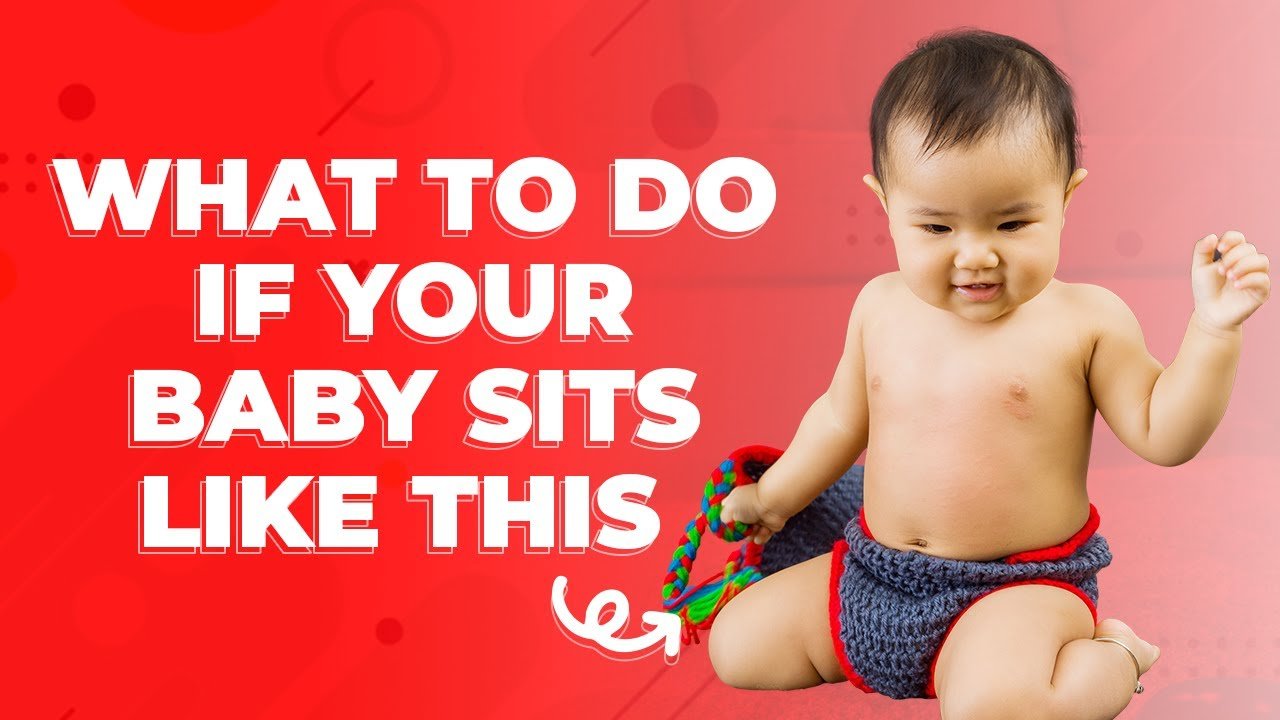Have you ever wondered whether your baby sitting in a W-position is harmful? In this video by Emma Hubbard, you’ll learn about the myths and facts surrounding the dangers of W-sitting. Discover why babies W-sit, what’s considered normal, and when you should be concerned. With helpful insights and information, you’ll gain a better understanding of why this position is common and a natural part of your baby’s development.
As Emma Hubbard explains, W-sitting may look uncomfortable, but it actually helps babies become more stable and use their hands in play. By watching this informative video, you’ll gain peace of mind and valuable knowledge about your baby’s development. Don’t miss out on learning the truth behind W-sitting dangers and discover how to support your baby’s healthy growth.

What is W Sitting
W sitting is a common position seen in babies where they sit on the floor with their knees bent in front of their body and their legs resting towards the side. This position forms a W shape with their legs and bottom. It is a typical sitting posture that babies use during play and exploration.
Definition of W Sitting
W sitting refers to the position where a baby sits on the floor with their legs forming a W shape in front of their body. This position is characterized by their knees being bent and their legs resting towards the side.
Common position seen in babies
W sitting is a prevalent sitting position among babies, often used during play and exploration. It allows babies to have a wider base of support and use their hands more effectively in activities.
How to identify W Sitting
You can identify W sitting by observing your baby sitting on the floor with their knees bent in front of their body and their legs positioned towards the side. This position provides stability and support for babies during play.
Why do Babies W Sit
There are two main reasons why babies choose to sit in the W position. Firstly, babies are born with flexible joints that allow them to bend and rotate their legs without discomfort. Secondly, W sitting provides a stable base for babies to engage in play activities.
Two main reasons for W Sitting
The flexibility of joints in babies allows them to adopt the W sitting position comfortably. Additionally, the wider base of support provided by W sitting enables babies to use their hands effectively during play.
Advantages of W Sitting for babies
W sitting offers stability and support for babies while playing. It allows them to explore their environment actively and engage in various activities without feeling unsteady. This position also helps babies develop their motor skills.
Should I be Concerned?
While W sitting is a common and natural position for babies, there are instances when it may warrant concern. Understanding when to be cautious about W sitting can help parents navigate their baby’s development effectively.
When to be concerned about W Sitting
If your baby exclusively sits in the W position without transitioning to other sitting postures, it may be time to seek advice from a healthcare professional. This could indicate a developmental delay or an underlying issue that needs attention.
Normal developmental stages in babies
Babies go through various developmental stages that involve different sitting postures. It is normal for babies to explore different sitting positions, including W sitting, as they develop their motor skills and coordination.
Seeking advice from a doctor or physiotherapist
If you have concerns about your baby’s sitting habits, it is advisable to consult a pediatrician or a physiotherapist. They can assess your baby’s development and provide guidance on how to address any potential issues related to W sitting.
Myths about W Sitting
There are several misconceptions surrounding W sitting that can cause confusion for parents. Understanding the truth behind these myths can help alleviate unnecessary concerns.
Misconceptions surrounding W Sitting
Some misconceptions suggest that W sitting is harmful to babies’ hip development and can lead to long-term issues. However, these beliefs are often unfounded and not supported by scientific evidence.
Cautionary advice from family members
Well-meaning family members may offer advice against W sitting, claiming it is harmful to babies. While their intentions may be good, it is essential to seek professional guidance to determine the validity of such warnings.
Understanding the truth behind W Sitting myths
Research has shown that W sitting is a natural and functional position for babies. It provides stability and support for motor development and is not inherently harmful when used in moderation.
Facts about W Sitting
Knowing the facts about W sitting can help parents make informed decisions about their baby’s sitting habits. Understanding the importance of various sitting positions and the role of W sitting in play is crucial for optimal development.
Importance of multiple sitting positions for babies
Babies benefit from using a variety of sitting positions to develop different muscle groups and motor skills. W sitting is one of many postures that contribute to a baby’s physical development.
Role of W Sitting in play and exploration
W sitting allows babies to engage in play activities with greater stability and control. It enables them to use their hands effectively and explore their surroundings comfortably.
When W Sitting indicates a potential issue
While W sitting is typically harmless, consistent and prolonged use of this position may signal an underlying problem. Parents should pay attention to their baby’s sitting patterns and seek professional advice if necessary.
Impact on Hips and Development
Concerns about the impact of W sitting on hip development and overall growth are common among parents. Understanding how to maintain proper hip alignment and minimize potential risks is essential for promoting healthy development.
Potential concerns about hip development
Long-term W sitting can affect hip alignment and lead to muscle imbalances in babies. It is important to monitor your baby’s sitting habits and provide opportunities for varied movement to support healthy development.
Ensuring proper hip alignment in babies
Parents can promote proper hip alignment in babies by encouraging diverse movements and postures during playtime. Creating an ergonomic environment and offering support for different sitting positions can help prevent hip issues.
Long-term effects of consistent W Sitting
Consistent W sitting over an extended period may impact a baby’s hip development and musculoskeletal health. Parents should be mindful of their baby’s sitting habits and seek professional advice if they have concerns about the long-term effects.
Professional Advice and Resources
Consulting a healthcare professional is crucial for addressing any concerns about W sitting and ensuring optimal development for your baby. Seeking guidance from a pediatrician or physiotherapist can provide valuable insights into your baby’s growth and well-being.
Assessment of developmental milestones
Healthcare professionals can assess your baby’s developmental milestones and offer recommendations on how to support their growth. Regular check-ups and consultations can help track your baby’s progress and address any emerging issues promptly.
Seeking guidance on baby’s positioning
Parents can benefit from professional advice on their baby’s positioning and sitting habits. Physiotherapists can provide tailored strategies to promote healthy sitting postures and address any concerns about W sitting.
Parental Awareness and Education
Educating parents about normal variations in sitting positions and the benefits of diverse movements for babies is essential for promoting healthy development. Enhancing parental awareness can empower caregivers to make informed decisions regarding their baby’s posture.
Educational resources on baby development
Accessing educational resources on baby development can help parents understand the stages of growth and the significance of various sitting positions. Knowledge about normal variations in sitting can alleviate concerns and promote confidence in caregiving.
Understanding normal variations in sitting positions
Babies may adopt different sitting postures as they explore their environment and develop their motor skills. Recognizing these variations as part of typical growth can help parents support their baby’s physical development effectively.
Safety measures for promoting healthy sitting habits
Parents can implement safety measures to support healthy sitting habits in babies, such as providing adequate support and creating a safe play environment. Being mindful of ergonomics and offering opportunities for movement can contribute to optimal development.
Practical Tips for Parents
Encouraging diverse movements and postures in babies is essential for promoting healthy development. Creating an ergonomic environment that supports varied sitting positions and staying informed about the latest research on baby development can benefit your baby’s growth.
Encouraging diverse movements and postures in babies
Parents can encourage their babies to explore different sitting positions and movements to strengthen their muscles and coordination. Providing opportunities for play that involve varied postures can enhance motor skills development.
Creating an ergonomic environment for play
Setting up a safe and ergonomic play area for your baby can promote healthy sitting habits and support their physical development. Using supportive seating and cushions, and ensuring a clutter-free space can create a conducive environment for exploration.
Staying informed about latest research on baby development
Keeping up to date with the latest research on baby development can help parents make informed decisions about their child’s growth. Being aware of current findings and recommendations can guide caregiving practices and promote optimal development.
Conclusion
In conclusion, understanding the myths and facts about W sitting is essential for parents to navigate their baby’s development confidently. While W sitting is a common posture for babies, being aware of the potential impact on hips and overall growth can help parents make informed decisions about their baby’s sitting habits.
Summarizing the key points about W Sitting myths and facts
By debunking myths and embracing facts about W sitting, parents can promote healthy sitting habits and support their baby’s physical development effectively. Being informed about normal variations in sitting positions and seeking professional advice when needed can enhance caregiving practices.
Empowering parents to make informed decisions regarding baby’s posture
Empowering parents with knowledge about W sitting can enable them to make informed decisions about their baby’s posture and development. By understanding the importance of diverse movements and creating a supportive environment for play, parents can foster optimal growth in their child.
Promoting healthy sitting habits for optimal development
Promoting healthy sitting habits in babies is vital for their overall development and well-being. By encouraging varied movements, ensuring proper hip alignment, and staying educated on baby development, parents can create a nurturing environment that supports their baby’s growth and motor skills.

